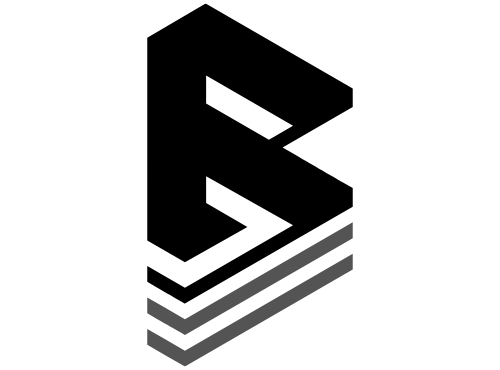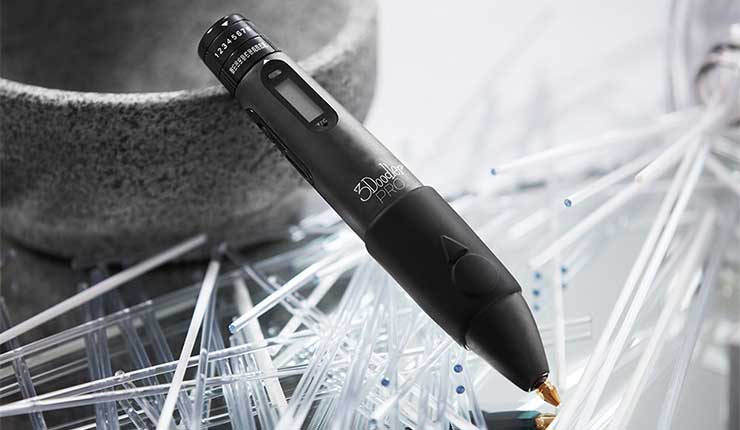The concept of 3D printing is at large and what started as something of a hobby is getting more and more advanced by the day, and turning into something filled with enough potential to change the world, and how we gain access to things that we want.
Yes, we are boldly acknowledging that 3D printing is something that has taken the world by storm, and while 3D printers are already doing an excellent job at helping people create some of the most amazing items using a 3D pen or a 3D printer.
What is 3D Printing Pen ?
In case you haven’t heard of a 3D pen, it’s basically based on the same principle that we are used to seeing in the 3D printers, however, unlike large 3D printers, the 3D pens are more suited for smaller jobs. Jobs like creating 3D models, and sculptures are done using a 3D pen because they are small, and the level of scale is smaller as well.
Now a lot of people may consider these 3D pens a gimmick, but if you take a closer look at just how popular they are, and check out some of the brilliantly created sculptures using 3D pens, you’ll realise just how good they are at the job they do.
Watch Amazing Creation of 3D Pen
How 3D Pen Work ?
For those who don’t know how 3D pens work, the whole principle is pretty safe to understand; you load the 3D pen with the type of plastic you want to use with it, once that’s done, you let the pen heat the plastic, and once the plastic is heated enough, it can be squeezed out of the nib of the pen.
The learning curve on a 3D pen is somewhat difficult because it requires your hand to be very steady, but if you dedicate enough time to it, the good news is that you’ll be able to easily create some of the finest looking models with a 3D pen.
Another great thing is that the internet is full of tutorials on how you can effectively use 3D pens without having to deal with burnt skin, and a lot of wasted plastic filaments. As for the purpose of this article, we will be taking a look at some of the best 3D pens that are available in the market.
This is important because the 3D pens have taken the market with a storm, and it’s very, very easy to get confused when it comes to buying the pens. So, in order to make things easier, we will be testing 10 3D pens that are available for the consumers and see how they fair against each other as well as how good they are in general.
In order to help have a better understanding, we have divided the reviews in 3 categories. So, without wasting anymore time, let’s start looking at the best 3D pens that are available in the market, shall we?
First Take a look quick look on Table.
10 Best 3D Printing Pen 2021
[table id=20 /]
1. Lix 3D Pen – The Best 3D Pen
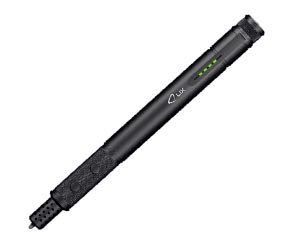
The first 3D pen we are looking at is simply called the Lix 3D Pen, and while he name may seem like a bore to a lot of people, the nice surprise here is that Lix managed to create the smallest, most compact 3D pen that is available to buy.
Yes, you’ve heard it right, this 3D pen is as the size of a standard pen that has a rather bulkier body, and we can’t complain because this thing looks absolutely marvelous. Let’s see how it fairs.
Build Quality/Design
First things first, if you want to buy a good 3D pen, then you need to know that the build quality should be good. While you’re not going to hurl your 3D pen around, it’s always good to know that the build quality is good enough to withstand the wear and tear of time.
The good news is that the Lix 3D pen happens to be pretty solid as far as the build quality is concerned, and that’s not all, it also happens to be really aesthetically pleasing. The pen is available in matte black, and matte grey colours, and both have a striking approach towards modern 3D pens.
One also shouldn’t forget that this happens to be the slimmest 3D pen that is available in the market, so the whole experience of using it just jumps to an entirely new dimension, making the Lix 3D pen a fan favourite when it comes to build quality and design.
Another great thing is that due to the smaller, sleeker design, the company was able to make the pen a lot lighter than some of the other 3D pens available in the market.
Types of Supported Plastic
When it comes to buying 3D pens, it’s extremely important to know the type of plastic your potential 3D pen supports; the most common type of plastics that are usually supported is ABD, and PLA. The good thing is that the Lix 3D pen supports both plastic types.
Apart from the filaments that ship to you with the pen, you can buy them separately from a wide range of colour. The good thing here is that Lix is selling both ABS and PLA plastic filaments in 2 different flavours; you can either buy them in a translucent form, or if you want something more vibrant, you can choose a completely solid version.
This is something that allows a lot more freedom since you can add a new mix of colours into your 3D creations. So, needless to say, as long as you’re buying the Lix 3D pen, your choices are limitless.
Ease of Use
When buying a 3D pen, one of the most important things apart from the supported plastic filament is obviously the ease of use. After all, if a 3D pen isn’t easy to use, what’s the purpose of actually buying it? Well, the good thing about Lix 3D pen is that the ease of use is certainly there, and it’s rather easy to understand.
In case you are wondering, the process is actually listed on the LIx’s website, but to make things easier, we are going to explain just how easy the entire process of using the pen is. You simply have to plug it in using the supplied cable, once that’s done, you’ll have to wait at least a minute before the plastic filament reaches the melting point, once that’s done, you’ll get a notification, you can start creating the brilliant art using this 3D pen.
That’s how easy the whole using process is, ensuring that you don’t run into any issues with this pen.
Conclusion
There’s no other way to say that the Lix 3D pen is actually ahead of its time; it’s sleek, it’s small, it’s fast, and it looks amazing. The good thing is that it doesn’t even cost that much. Sure, some purists may say that a 3D pen is supposed to be big, but do keep in mind that we are heading towards the future, and smaller is always better.
There’s no denying that the Lix 3D pen is brilliant in almost every single aspect of 3D printing using a 3D pen, just make sure you pay enough time to the learning curves.
Pros
- Excellent design and build.
- PLA and ABS plastics are available in a variety of different colors.
- The pen is really, really easy to use once you get a hang of it.
- Easily the lightest 3D pen, sleekest 3D pen we have used.
Cons
- None
2. 3D Simo Mini
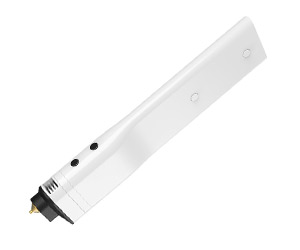
The next 3D pen that we are looking at is called the 3D Simo Mini, it’s the smaller, slimmer version of the original 3D Simo. Now the unique thing about this 3D pen is that this 3D pen is actually modular. Yes, you’ve heard it, the 3D pen ships with a number of different modules that you can use to perform different tasks.
Apart from the conventional 3D printing, the 3D Simo Mini is capable of soldering, foam cutting, as well as burning. All of this thanks to the modules that are shipped with the pen. As for the rest of the pen itself, let’s take a look at just how good it is.
Build Quality/Design
First things first, it should be important that you need to consider the build quality because the 3D printing pen itself has a mechanism inside, and if the build quality isn’t good enough, the exterior can get quite hot to touch. With that said, the good thing here is that the build quality on the 3D Simo Mini is pretty good.
Although it’s not metal by any means, the pen uses high quality plastic that won’t get hot to the touch, however, it’s important to keep in mind that it still feels like plastic, and the scratches will be quite visible on the white body.
As for the design, while it’s not the slimmest pen in the market, it’s easily operable with just one hand, and that is the man thing that matters here. Needless to say, you won’t have any issues using the 3D pen to its full potential.
With that out of the way, another good thing about this 3D pen is that it doesn’t really weigh a lot, topping everything off at just 40 pounds, this is something impressive right there. The only downside in this department is that the build quality feels cheap, and it feels that the pen may break in half.
If you are okay with that, then you really shouldn’t have any issues with the build quality of the pen, because if you are planning on using it carefully, then it won’t break or get damaged.
Types of Supported Plastic
When buying a 3D pen, it’s important to know the type of plastics the pen will be working with, and while the majority of 3D pens support the most common ABS and PLA plastic types, the good thing about the 3D Simo Mini is that the list is quite extensive to begin with.
Yes, you will get full support for both ABS, and PLA plastic, however, if that’s not what you want, then there are more filaments available in the shape of different materials like PETG, wood, metal, and termochrome; a material that changes colour based on the temperature it’s exposed to.
Now you should know that the metal and wood filaments are basically plastic, however, they have enough traces of wood and metal present in them to make the end product actually feel like they are made out of wood and metal.
This versatility earns the 3D Simo Mini massive points, and makes it one of the best 3D pens available in the market mainly because you have so many options to work with.
Ease of Use
We have a rather simple theory about 3D pens, if they’re not easy to use or learn, there’s no point in spending your money on them. 3D pens are getting easier and easier to use nowadays; the majority of credit goes to the fact that there’s a lot of content available on the internet that aids the learning process.
As for the 3D Simo Mini, things are a bit of a mixed bag, although the learning curve with the 3D pen itself was rather easy, we can’t say the same about the burning, foam cutting, and soldering modules that are supplied with the pen.
We would have skipped the modules completely if they were a separate purchase but considering how they’re not, we have to take them into consideration as well. The modules can be a bit difficult to use for starters, but the learning curve is there, and if you achieve that, you can be the master of the craft without any issue.
Last but the least, there is an app that you can use to watch tutorials, and create your own profiles; something that we haven’t seen before, and definitely makes the whole job a lot easier.
Conclusion
While it may not look like it, it seems that the 3D Simo Mini is trying to achieve a lot of things at the same time; sure, it’s a great 3D printing pen, but when you look at the other things that it is also capable of doing, you can’t help but wonder if it’s trying too hard, or it has a lot of ambitious.
There’s no denying that the 3D Simo Mini is great, and even though there is a learning curve available, and it can be frustrating, it keeps you hooked because you want to know what’s beyond the learning curve, and just how good the pen is.
If you’re okay with the steep learning curve, and somewhat cheap build quality, the 3D Simo Mini is a great 3D Pen for your money.
Pros
- Supports a lot of materials that you can use.
- Comes with a number of filaments to get you started.
- Modular design that lets you attach a foam cutter, a soldering machine, and a burning machine.
- Mobile app adds more fun and depth in the creativity.
Cons
- There’s quite a bit of learning curve, so you have to pay close attention.
- The overall build quality feels cheaper.
3. Scribbler v3 – Most Selling 3D Pen
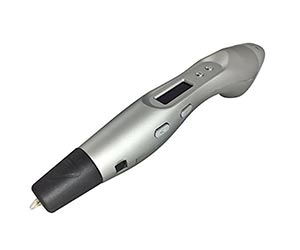
For those who don’t know, the original Scribbler was one of the first 3D pens that were available in the market, and while the first one was definitely a success, the company only managed to revolutionize things even further by making sure that the legacy lives on.
Today, we are taking a look at the Scribbler v3, a third iteration of the 3D pen that took the mainstream by storm. Is it still relevant as it was back in the day? Let’s find out.
Build Quality/Design
Starting off with the design, you’ll notice that the company here isn’t trying to make a statement with the Scribbler v3 as the pen happens to be unapologetically bulky, and weighty as compared to what the competition has to offer. This surely raised some eyebrows in the beginning, but knowing that the 3D pen is made using quality materials, the extra weight can be overlooked.
As for as the build quality is concerned, you should now that the 3D pen doesn’t feel cheap at all; however, that comes at the expense of the added weight and bulk which may be an issue for some.
Moving on, the design isn’t all that attractive either, the 3D pen is big, and looks really weird as compared to what some of the competition’s offering. However, like we said before, the company isn’t really trying to do something like that so It’s understandable.
Another good thing is that the 3D pen has a pretty sizeable OLED screen on it, and while it may not be something that a lot of people prefer as usable, it’s good because it will give the required and useful information about the pen’s operation itself.
The pen is also available in a number of attractive colours to make your selection process a lot smoother than it already is.
However, the important thing that you should keep in mind here is that the 3D pen is somewhat bulky, so keep that in mind.
Types of Supported Plastic
We have stressed this fact over and over again that the types of supported plastic are really important. That’s because if a 3D pen that you’re about to buy doesn’t suppose a wide range of plastics, then it will actually go to waste. With that said, the good thing here is that the Scribbler v3 supports a variety of different plastic materials.
You get the standard the PLA and ABS, but apart from that, you also get materials like plastic wood, metal, bronze, and copper filaments too. Now do keep in mind that these filaments are actually made out of plastic, but they have some traces of the aforementioned materials that manage to give them that distinct feel and quality.
Overall, it’s safe to say that if you are someone who likes to experiment with 3D pens, and appreciate having a variety of different filaments to work with, then it’s safe to say that you’re going to have a fun time with the Scribbler v3 thanks to the wide variety of filaments available.
Ease of Use
The next important thing about any 3D pen is just how easy the 3D pen is to operate, this is important because it may be a lot easier for veterans, however, for anyone who happens to be a newcomer, the whole process of using the 3D pen can be a lot difficult.
Well, for starters, if you want to be fully prepared, and understood about the basics, it’s safe to say that you should go over on the internet, and start looking at the tutorials on how you can use it. Then you should take some filaments and start practicing.
The thing about 3D pen is that you have to treat it like a guitar, there’s no other way around it, just keep practicing and you’ll start mastering the art. With that said, the ease of use on this one is certainly there, the OLED is helpful enough to provide all the useful information about the plastic, so it’s a good thing to have on your 3D pen.
Just keep in mind that different filaments have different melting point, so you can do some research on them before you actually start using them.
Conclusion
Overall, the Scribbler v3 does a lot of good things, especially the things that it is designed to do. It’s not promising to be a jack of all trades at all, and that is a good thing because this way, at least we are aware of the fact that we aren’t getting something that isn’t properly good at what it does.
The Scribbler V3’s only downside is that the pen itself happens to be bulkier, and somewhat weightier than the competition, and if you have bigger hands, then it shouldn’t be an issue. However, keep in mind that this is just subjective, and you can easily get used to holding the pen if you spend some amount of time with it.
Pros
- Variety of colours to choose from.
- Quite a lot of filaments available to choose.
- Works really well, and easy to use.
- OLED helps with some useful information.
- Solid build quality.
Cons
- The pen itself is somewhat larger to hold, and bulkier too.
4. 3Doodler
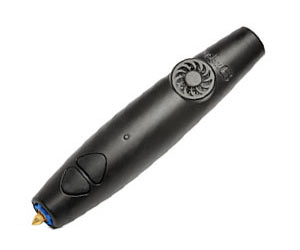
We are getting closer to the first half of the list, and the good news is that there’s no shortage of amazing 3D pens to look at, the one we are looking at right now is called the 3Doodler. Sure, the name isn’t something that you get to hear a lot, but it’s a clever way of naming a 3D pen.
Now you need to keep in mind that this is one of those 3D pens that were released before this small form factor tech went mainstream, so you may find it pretty basic and barebones as compared to some of the competition.
However, the good thing is that the simplicity doesn’t hold this pen back from being good, let’s find out.
Build Quality/Design
When it comes to 3Doodler, the overall build quality is rather simple to look at; sure the pen is largely made out of plastic, but the good thing is that the plastic isn’t some cheap material, and feels pretty solid. There’s no denying that having a good build quality in a 3D pen is absolutely important because you are spending a pretty dime on it, so you should at least get a product that can withstand the wear and tear.
Moving on to the design, the 3Doodler looks a bit unconventional, there are no weird gimmicks like an OLED screen or what not. You simply get a 3D pen that is made to get the job done. As far as the looks are concerned, the 3Doodler is unapologetically plain and simple looking and considering how it’s one of the first ones in the market, it makes sense.
You should know that the way this pen looks like won’t really hinder your overall experience with how it actually performs. It’s a bit heavy at 130 grrams, but the added heft gives it an overall solid feel, and gives you a peace of mind that you won’t end up breaking it.
Types of Supported Plastic
The next section of any 3D pen is the type of plastics a pen actually supports, we have seen some impressive offerings in the list, however, the 3Doodler keeps everything simple and offers the support for only PLA and ABS.
While this is something that is certainly a downside for many people, the good news here is that PLA and ABS remain the most common forms of plastic that are used in 3D pens, so you shouldn’t really care about not having the fancier ones available to use.
However, do keep in mind that the pen ships with 50 plastic stands, this is a great amount of filaments because this will help the aspiring 3D pen artists to make some of the best looking art with their 3D pens without having to by extra filaments.
Ease of Use
Like stated time and again, it’s really important for a good 3D pen to be easier to use, or at least have a learning curve that isn’t too difficult to follow. The good news about the 3Doodler is that the pen is rather simple to use without really getting into the complicated procedures.
Sure, we won’t deny that the learning curve is certainly there, but the good thing is that once you are fully familiar with how the pen works, as well as the temperatures for both ABS, and PLA, the overall experience becomes a lot smoother.
So, without complicating things, just make sure that you pay enough attention to how the pen works, and before you start creating your masterpieces, make sure you do some amount of time learning the crevice, and you’ll be good to go.
Conclusion
In a world where 3D pens are getting more and more advance and are being filled with gimmicks, the 3Doodler is unapologetically original, and doesn’t want to change too much of how it works. Yes, it works like any other 3D pen that is available in the market, but at the same time, it also happens to be really, really simple.
It doesn’t sport an attractive, lighter body, or an OLED screen to guide you on some of the basics, however, when it comes to business, it happens to be as good as any other 3D pen in the market, and that’s what really matters to us.
If you are really okay with somewhat dated design, then go ahead and spend your money on the 3Doodler, and we can assure you that you will not have any issues whatsoever.
Pros
- Works as intended, and works really well.
- Comes with 50 plastic stands.
- Easy to learn, and simple to use.
- Doesn’t have any useless gimmicks.
Cons
- Design is bulky and outdated.
5. Sunlu SL 400
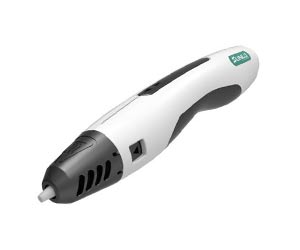
While the majority of 3D printing pens that we have tried before were high end, the one we are looking at right now is actually not. As a matter of fact, this is made for people who are still relatively new to 3D pens, and how they work.
That is why this 3D pen doesn’t cost as much as some of the others in the list of competition. While a lot of users may complain about how the 3D pen isn’t good enough for the list, keep in mind that the aim of this is list to provide accurate, unbiased reviews for the people who are willing to spend money on products.
With that said, let’s take a look at Sunlu SL -400.
Build Quality/Design
We have come at a point where it’s really hard to create a revolutionary design with an entry level 3D pen, and same is the case with Sunlu SL – 400. As a matter of fact, the 3D pen comes with a rather simplistic build quality and design that may not impress a lot of people, but there’s no denying that it is certainly very attractive.
For starters, the build quality is largely plastic, and to be honest, if you factor in the price of this pen, you can’t really complain. The good news here is that despite being plastic, the build quality is still nice enough, and another good thing is that the pen is available in a variety of different colours including a colour that happens to be transparent.
As for the design, it has taken cue from some of the most conventional 3D pens that are available in the market, and thus manages to look rather good instead of looking ridiculous. To be honest, it’s definitely our favourite pick, and we wish that more prominent brands also take this route.
There’s no denying that the build quality isn’t that amazing, neither is the design, but we must keep in mind that considering the price you’re paying for this 3D pen, it makes a lot of sense.
Types of Supported Plastic
When we received this 3D pen and realized the total cost of it, we had our expectations pretty low, and we were wondering what feature would be missing from this pen. Sadly, the type of plastic that’s supported with this pen only happens to be one.
Yes, you’ve heard it, the Sunlu SL – 400, to our dismay, only supports PLA plastic; which means that you can’t create really sturdy structures. Now the reason why this is a downside is that despite being really, really vibrant, and having a lot of colours to choose from, the biggest disadvantage of PLA of is that it’s not as strong as the ABS plastic.
This can be an issue if you’re only adept at working with ABS plastic, but if PLA is the main choice, then you shouldn’t have any issue. Another thing to keep in mind is that this 3D pen is made for people who are getting into proper art, so not having a feature like that isn’t a big deal.
Ease of Use
The good thing about the majority of entry level products is that they are really, really easy to use; such is the case with the Sunlu SL – 400. Considering how the 3D pen only supports PLA, the ease of use increases because PLA melts at a lower temperature as compared to the ABS plastic, and that is why you should be satisfied.
However, it’s really important to keep in mind that you plug upon the first trial, you plug in the 3D pen and start a trial run so you can at least get yourself familiar with the features that are being offered by the 3D pen.
As far as the ease of use with the Sunlu SL – 400 is concerned, the good news is that the 3D pen happens to be really, really easy to use. That is something we had already expected because of how it only supported only one plastic type, and how it was created for the newcomers rather than the advanced artists.
Conclusion
To be fairly honest, we kept our expectations low with the Sunlu SL – 400; not because it’s a cheap, entry level 3D pen that is designed for the beginners but because we have never heard of it before this review. However, it is safe to say that it defied our expectations and proved to be one of the best products that we have seen in the market.
Sure, it doesn’t support ABS plastic, and doesn’t really have any advanced features, but despite these minor flaws, the good thing is that it works, and it works as intended. For anyone who’s willing to learn the art of how a 3D pen works, things can’t really get better than this.
Pros
- Great value for money.
- Comes in attractive colour options.
- Great option for beginners and newcomers willing to try out 3D printing.
- Simple and easy to use.
Cons
- Only supports one type of plastic.
- Doesn’t really come with advanced features.
6. MYNT3D Printing 3D
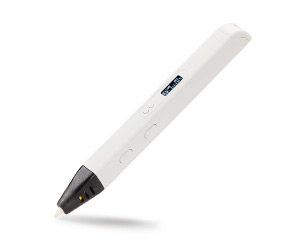
The next pen on our list is from a company called MYNT3D, and the 3D pen is simply called Printing 3D, now this is certainly an odd name for the pen, and we though that this dubious name scheming may have an overall impact on just how good or bad the pen is.
Well, the good news is that the pen ended up being really, really good, and for the price you’re paying for it, the pen offered a lot of features to begin with. In case you are wondering, we shouldn’t waste any more time, and get straight to how good it faired.
Build Quality/Design
First things first, we are going to take out how the build quality on this 3D pen is; it is important to keep in mind that the majority of 3D pens that are available in the market are actually made out of high quality plastic, because it’s a lot cheaper to produce, and doesn’t really add in a lot of weight.
Same is the case with the pen from MYNT3D, and while some of the nitpickers may end up complaining, we really can’t hold anything against the company as the plastic finish happens to be rather nice to the touch, and doesn’t feel cheap. This earns extra points because no one likes to hold.
As for the design, there’s nothing revolutionary going on here, but considering the cost of this 3D pen, and the materials used in the creation, it’s safe to say that we don’t really have any major concerns as far as the design of this 3D pen is concerned. However, it’s really important to keep in mind that most 3D pens are based on the same design that we have been seeing for ages.
Another good thing here is that the 3D pen isn’t really heavy, and that makes it rather easy to operate without really running into any issues regarding the handling. A definite plus.
Types of Supported Plastic
Now comes the important bit, it’s safe to say that every 3D pen should at least have the basic plastic filaments supported; after all, it will give you at least some amount of freedom with how you want things to be. The good thing here is that the MYNT3D pen actually supports both PLA and ABS plastic.
This is good because both of these plastics are physically different when it comes to the characteristics with PLA being more vibrant but less strong and ABS having limited colour options but with higher amount of strength. While this may not be important to everyone, it is important for people who prefer to work with either type of plastic.
Another great thing here is that the 3D pen actually works with universal filaments so you don’t really have to buy the ones that are sold by the company; just make sure that you’re ordering the right size of the filaments and everything will be good to go without really any issues.
Ease of Use
Now comes the important bit, when buying a 3D pen, one of the main things about a pen is the ease of use; while some pens aren’t really easy to use, the good news is that there are a lot of pens that can be used with great ease. For those wondering whether or not we had a good experience with the MYNT3D Printing 3D or not, well, the good news is that the pen is really easy to use.
This is one of the few 3D pens that actually have speed controller on them, so ii operating the 3D pen at a faster speed is not something that your amateur hands are used to, you can always dial it down and use it at a slower speed.
Sure, it does sound like a gimmick, but the good thing here is that having a speed control can actually help the users have a proper control, you can start learning from a slower speed, and once you’re used to the 3D pen, you can move the speed up, and be quicker at drawing.
This is an overall really nice feature that should be made more common with other 3D pens available in the market, because it definitely makes the whole job a lot easier. In addition to that, there’s an inclusion of a small OLED display that displays the important information.
Conclusion
While the expectations were moderately low with the MYNT3D Printing 3D, the good news is that everything worked rather well with the product at hand. This is a near perfect 3D pen that doesn’t really have a lot of flaws to begin with.
Now this may surprise some amount of people, but during the whole testing tenure, we have come to realise that for the price you’re paying for this particular 3D pen, you’re actually getting a lot of stuff. You get the support for both PLA and ABS plastic, and a tiny OLED display that serves as a handy guide.
The only real downside is that this 3D pen suffers from the same issue the majority does; the ergonomics aren’t as friendly, and that can be an issue for some.
Pros
- Supports both ABS and PLA plastic.
- No proprietary filaments required.
- Comes with the ability to adjust speed.
- Decent build quality.
Cons
- Ergonomics come in a way of what otherwise is a great pen.
7. Soyan Professional 3D Pen for Kids
Best 3D Pen for kids
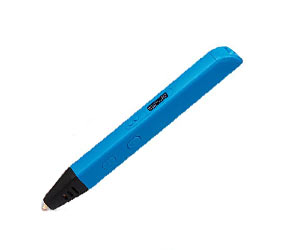
Next up, the professional 3D pen that we are looking at is from a company called Soyan; now the 3D pen is called Professional 3D Pen for Kids, and there’s no denying that name is certainly confusing, especially knowing the fact that that the words “professional” and “kids” don’t really go along with each other.
With that in mind, we were actually excited about checking out the pen because at this point, we are actually awaiting to check out something that is more tailored towards kids than it is towards professional.
Let’s not waste any more time and look at the Soyan Professional 3D Pen for Kids.
Build Quality/Design
First thing first, we are going to take a look at just how good the build quality of this pen is; it’s made out of a good quality plastic, it doesn’t feel cheap at all. This means that you shouldn’t be scared of breaking the 3D pen while using it.
A lot of people have stressed over the fact that some of the 3D pens that are available in market aren’t made out of good quality materials, but the good thing here is that you shouldn’t be having any issues as far as the design language is concerned.
Moving on, the design of the 3D pen is pretty familiar, there’s nothing revolutionary going on here, and that’s not a bad thing because the design is just perfect to hold. You get enough ergonomics, and the overall pen doesn’t really weigh a lot. So, as far as the design is concerned, you really shouldn’t have any issues.
The only real issue with the Soyan Professional 3D Pen for Kids is that the size of the cord is somewhat smaller, and this can be an issue for people who don’t use extension wires. If you’re okay with that, then this small design flaw shouldn’t be an issue for you because it can easily be fixed.
Types of Supported Plastic
Considering how this is a “professional” 3D pen made for kids to practice and hone their craft, you’d wonder if it comes with the support for both PLA and ABS plastic, however, the strange thing here is that the Soyan 3D pen actually only supports ABS plastic.
During our testing we tried to use the PLA filaments, but for some reason, they just wouldn’t fit, and the even the instruction manual didn’t mention any PLA plastic whatsoever. This is kind of odd, but considering the price you’re paying, it’s understandable.
Had it been a more expensive 3D printing pen, then it would have made sense to deduct some points because that wouldn’t have made any sense at all.
Ease of Use
Now the ease of use with this 3D pen is certainly there, thanks to the fact that this 3D pen really only supports only one type of plastic, this makes the entire process of choosing the 3D pen a lot easier. However, you have to make sure that before you decide to hand this off to your kid, they are well aware of how to use it.
To make things a bit easier for the kids as well as the parents, the company has added a speed control switch, so if you are scared that your kid may start using the 3D pen at full speed, simply make sure you adjust the speed and you’ll be good to go.
This is something that not a lot of people have had the access to, and it actually makes the whole job a lot easier. With that out of the way, for anyone who’s willing to have the optimal experience with how this 3D pen can used, nothing can get easier than this.
Conclusion
So, there you have it. While this isn’t the most advanced 3D pen by all means, the fact that it actually is made for kids makes it a lot more understandable than some of the other 3D pens that are available in the market. The good thing here is that you have a 3D pen that doesn’t cost much, buying this for your kids can set them on the learning and experiencing journey.
Sure, there are some shortcomings like a short power cord, and lack of support for PLA, but it’s not really a big deal if you’re buying it for your kid. Simply put, this is the perfect definition of you get what you pay for.
Pros
- Simple and easy to use.
- Quite lightweight and ergonomic in hand.
- Doesn’t require a steep learning curve.
- Ability to control speed is a nice touch.
Cons
- Small power cord can be an issue.
- No support for PLA plastic.
8. Aerb 3D Printing Pen
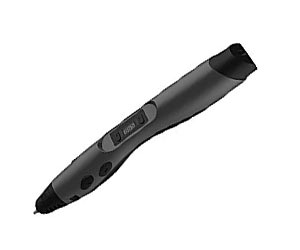
The next 3D pen that we are looking at is known as the Aerb 3D Printing Pen, while the name is certainly one of the weird ones, this happens to be one to the best looking 3D pen in the market. When we say that, we actually mean it because it is absolutely pleasing when it comes to the aesthetics.
Now it’s pretty safe to say that there’s no point in judging a 3D pen based on how it looks, and that is why we are going to put it through its paces to see just how good or bad this 3D pen fairs with the competition.
So, without further ado, let’s begin.
Build Quality/Design
Let’s start by talking about the thing that we were actually appreciating at first; there’s no denying that the build quality and the design of this 3D pen is absolutely lovely. The 3D pen is made using solid material throughout the entire body of the 3D pen, and it doesn’t feel cheap at all.
There’s no denying that the matte black finish on the 3D pen is absolutely stunning, and is something that we actually wish to see on majority of the 3D pens that are available in the market. So far as the aesthetics are concerned, we have no complains whatsoever.
With that said, let’s get down to the design, the good news is that just like the overall build quality; the design is absolutely stunning. The Aerd 3D Printing Pen is easily one of the most gorgeous 3D pens that are available in the market; it looks good, it feels good in hand, and all of it topped by really, really good ergonomics.
Types of Supported Plastic
The good news here is that the Aerb 3D Printing Pen actually supports both ABS and PLA plastic filaments, in case you are wondering, you’re required to use at the 1.75mm filaments because that’s what the supported plastic specification is.
This isn’t a bad thing at all because this is pretty much a standard size that is supported by the majority of 3D pens that are available in market. However, in case you have requirements for something bigger, then you’ll have to look somewhere else.
Taking a look at the cost of the pen, and the fact that it supports PLA, and ABS plastic, we can’t really complain; another good thing is that the filaments don’t have to be proprietary, which means that you can actually use any filament there is as long as the size is 1.75mm.
This is a great thing done by Aerb and we appreciate it because sometimes, the filaments in bulk are a lot cheaper than what may be available in bulk.
Ease of Use
Now comes the important part, the maker or the breaker of deals when it comes to buying a good 3D pen; is the Aerb 3D pen easy to use? Well, if you’re looking for a short answer to have your fill, then the good news here is that the pen is relatively easy to use as compared to the competition.
Everything is made easy thanks to the fact that the 3D pen comes with an 8 step speed control that will take your 3D pen from the slowest, to the fastest, and the reason why this is so good is because if you want to teach your kids how to use the 3D pen, you can start by slower speeds, and as they start learning, you can keep increasing the speed along with it.
This is something that is great and should be made available in other 3D printing pens too, because this takes the whole experience to a whole new level and makes it a lot easier for newcomers to have the proper amount of control over the 3D pen that they are using.
So as far as the ease of use is concerned, the Aerb 3D Printing Pen is definitely one of our favourites because it’s just THAT good.
Pros
- Easily one of the best looking 3D pens.
- Sturdy build quality.
- Supports both ABS and PLA.
- 8 step speed control is amazing.
Cons
9. 7TECH 3D Pen
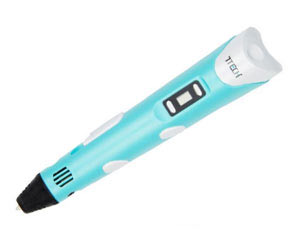
We’re on the second last product of the list and the 3D pen that we are looking at is actually one of our faovurites. Say hello to the 7TECH 3D Pen; an affordable yet versatile 3D pen that manages to get the job done just right without really stressing on having too many gimmicks.
What’s so special about this pen? Well, for starters, there are a lot good features present on the board, and for those who don’t want to spend a lot of money, this is a near perfect because you are getting a lot for the money you’re paying.
So, how good is it? Well, let’s find out, shall we?
Build Quality/Design
Okay, first things first, we are going to take a look at just how good this pen is built, but before we begin, we should let you know that this isn’t a pen for people who prefer looks over everything. The pen is pretty much unapologetic about itself, and we really don’t have a major issue with it because it’s a good 3D pen that is meant to get the job done.
With that out of the way, we should let you know that the build quality is largely plastic, and while that is certainly something that is going to tick people off, it’s pretty common. The good thing however, is that the build quality isn’t cheap, so you won’t have to worry about somewhat breaking your 3D pen when you’re using it.
Moving on to the design, you should be warned that the design is nothing spectacular, as a matter of fact, it looks like any other 3D printing pen that is available in the market, and there’s no real difference to begin with. This means that all the design conscious people should actually be aware of this.
The weight isn’t an issue as this 3D pen, despite being big, isn’t all that heavy; so even if you want this for your kids, you can have the assurance that they won’t be having any issues with that. Go ahead and buy it without any issues.
Types of Supported Plastic
Next up is the type of supported plastics that you can use with the 3D printing pen and the good news is that both PLA, and ABS are supported. However, the important thing that you should note here is that given the price tag of the 3D printing pen, it was kind of expected. So in case you are worried about messing things up, you shouldn’t.
As far as the size of the filaments is concerned, this 3D printing pen supports the size of 1.75mm, and as a matter of fact, we have seen that size become a norm, so you shouldn’t really have to worry about it at all.
Ease of Use
On the last, we are going to take a look at just how easy it us to use the pen, and to be honest, we don’t really have any complaints to begin with. The whole process of using this 3D pen happens to be really, really easy.
For the price you’re paying, you also get features such as speed control, something that is really good if you want to teach your kids how to effectively use the 3D pen and have a proper learning curve to begin with.
Conclusion
The good thing here is that the oddly named 7TECH 3D pen is nothing but a bag of surprises. Sure, you may be welcomed with unimpressive build quality, but if you want something that gets the job done in a great fashion, then nothing really gets better than this.
10. Manve Intelligent 3D Printing Pen
Best Budget 3D Pen
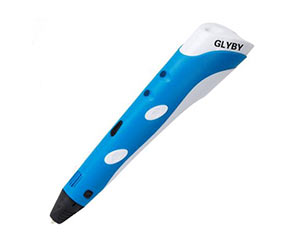
The last 3D pen our list is the budget friendly Manve Intelligent 3D printing pen that is made for people who are budget conscious and don’t really want to spend money, or you can even consider people who want to try their hands on something cheaper before buying a really good 3D pen
However, keep that in mind that it doesn’t mean that this 3D printing pen isn’t good because it most certainly is, especially when you know the price you’re paying for it. So, without wasting anymore time, let’s start looking at how good the pen is, shall we?
Build Quality/Design
First things first, we are going to take a look at the build quality and the design of this 3D pen is; to be honest, we have reached a point where it’s really hard to revolutionize the design or make it better so it’s not a concern. However, having a good build quality is something that we always stress upon because there’s no point in buying a 3D pen if it doesn’t have a good build quality.
Sadly, the build quality here is nothing fantastic, so to speak; the pen feels cheap and flimsy, but considering the price you’re paying, the best way to describe this pen is to say that this pen is best suited for children or beginners.
The 3D printing pen also happens to be pretty lightweight, so using it shouldn’t be a problem for anyone.
Types of Supported Plastic
While the build quality and design was nothing really impressive, the good thing about the types of supported plastic is that you’re getting support for both ABS and PLA plastic. Honestly, we really weren’t expecting it, but to our surprise, the Manve pen actually has support for both the plastic filaments and that is a nice thing to have especially when you consider the price.
Ease of Use
The last thing is obviously the ease of use, upon receiving, we weren’t expecting much from it, but you should know that it happens to be a pretty much no nonsense 3D pen. It’s easy to learn, and easy to use; however, one of the most important things that we actually like is that you can use this pen with a powerbank.
This I a nice feature, and possible mainly because the 3D pen doesn’t really require a lot of power to begin with. So, just keep in mind that you really don’t have anything to worry about when using this 3D pen.
Conclusion
Apart from the fact that this 3D pen is really, really easy to use, and can be powered using a power bank. However, the important thing to keep in mind is that there aren’t a lot of redeeming qualities to begin with. So, in case you are looking to buy it make sure that you buy it only if you want to practice your hand at a 3D pen.
Pros
- Works with a powerbank.
- Really lightweight.
Cons
- Flimsy build quality.
- No advanced features.
Final Word
So, there you have it, folks! After carefully going over the 10 3D pens that we have decided the winner, and it wasn’t really difficult to pick one. After testing the Lix 3D pen over and over again, it’s safe to say that we can’t find a better 3D pen than that in the market.
Sure, it’s expensive, but it’s lightweight, has a really slim profile, and works really, really well. With that in mind, just make sure that you’re aware of how to use a 3D pen because the learning curve is certainly there, and mastering it is something that you absolutely need.
